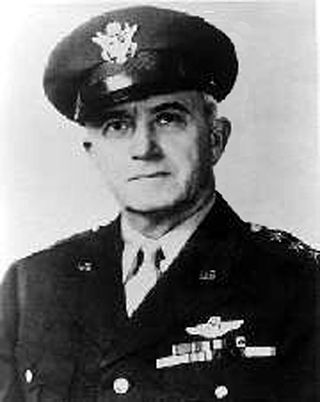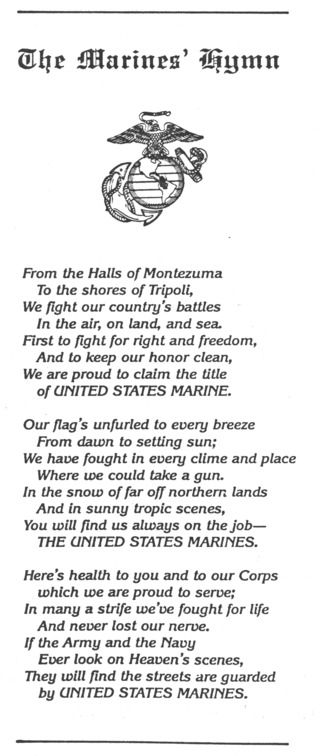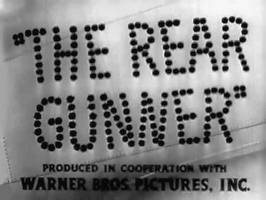
"Anchors Aweigh" is the fight song of the United States Naval Academy and unofficial march song of the United States Navy. It was composed in 1906 by Charles A. Zimmermann with lyrics by Alfred Hart Miles. When he composed "Anchors Aweigh", Zimmermann was a lieutenant and had been bandmaster of the United States Naval Academy Band since 1887. Miles was midshipman first class at the academy, in the class of 1907, and had asked Zimmermann to assist him in composing a song for that class, to be used as a football march. Another academy midshipman, Royal Lovell, later wrote what would be adopted into the song as its third verse. Another member of the Naval Academy Band, Willy Perlitz Jr., assisting in writing the music for the different instruments used in "Anchors Aweigh".

"You're a Grand Old Flag" is an American patriotic march. The song, a spirited march written by George M. Cohan, is a tribute to the U.S. flag. In addition to obvious references to the flag, it incorporates snippets of other popular songs, including one of his own. Cohan wrote it in 1906 for his stage musical George Washington, Jr.
"Forty Years On" is a song written by Edward Ernest Bowen and John Farmer in 1872.

"The Bonnie Blue Flag", also known as "We Are a Band of Brothers", is an 1861 marching song associated with the Confederate States of America. The words were written by the entertainer Harry McCarthy, with the melody taken from the song "The Irish Jaunting Car". The song's title refers to the unofficial first flag of the Confederacy, the Bonnie Blue Flag. The left flag on the sheet-music is the Bonnie Blue Flag.

"Marching Through Georgia" is a marching song written by Henry Clay Work at the end of the American Civil War in 1865. The title and lyrics of the song refer to U.S. Army major general William T. Sherman's "March to the Sea" to capture the Confederate city of Savannah, Georgia in late 1864.
"Godiva's Hymn", "Engineer's Hymn" or "Engineers' Drinking Song" is a traditional drinking song for North American engineers. Versions of it have been associated with the Army Corps of Engineers, as well as MIT, MTU, and various other universities, and is now often performed by the MIT a cappella group The Chorallaries. In many university engineering faculties, military engineering corps and other engineering organizations and societies, Lady Godiva is a school icon or mascot.

United States military bands include musical ensembles maintained by the United States Army, United States Marine Corps, United States Navy, United States Air Force, and United States Coast Guard. More broadly, they can also include musical ensembles of other federal and state uniformed services, including the Public Health Service and NOAA Corps, the state defense forces, and the senior military colleges.

"(I'm a) Ramblin' Wreck from Georgia Tech" is the fight song of the Georgia Institute of Technology, better known as Georgia Tech. The composition is based on "Son of a Gambolier", composed by Charles Ives in 1895, the lyrics of which are based on an old English and Scottish drinking song of the same name. It first appeared in print in the 1908 Blueprint, Georgia Tech's yearbook. The song was later sung by the Georgia Tech Glee Club on The Ed Sullivan Show in 1953, and by Richard Nixon and Nikita Khrushchev during the 1959 Kitchen Debate.
"The Army Goes Rolling Along" is the official song of the United States Army and is typically called "The Army Song". It is adapted from an earlier work titled the "U.S. Field Artillery March".
"Sussex by the Sea" is a song written in 1907 by William Ward-Higgs, often considered to be the unofficial county anthem of Sussex. It became well known throughout Sussex and is regularly sung at celebrations throughout the county. It can be heard during many sporting events in the county, during the Sussex bonfire celebrations and it is played by marching bands and Morris dancers across Sussex. It is the adopted song of Brighton & Hove Albion Football Club, Sussex Division Royal Naval Reserve, Sussex Association of Naval Officers and Sussex County Cricket Club.

"Hail to Old OSU" is the fight song of Oregon State University. It is extracted from a song written by Harold A. Wilkins in 1914 and is played mainly at sporting events like football and basketball games. The lyrics have been slightly altered since being written "to conform to a changing culture", changing to conform to new initials, and the use of a more gender-neutral version.

The Thunder of the East is the marching band of the University at Buffalo in the State University of New York system. UB's first marching band was created in 1920, and disbanded in 1927. It was revived in 1946, increasing in size and reputation until about 1970. It was known as "The Pride of the East." At that time, it was dissolved upon UB's departure from Division I athletics. In 1981, some UB students continued the tradition of playing music at UB's home football and basketball games by forming UB's Pep Band. In anticipation of UB's return to Division I athletics, a marching band was formed in 1999 and named, "Thunder of the East." The band debuted at the University at Buffalo Stadium on September 11, 1999. The Thunder of the East is currently led by James E. Mauck; and performs at UB's Buffalo Bulls home football games, as well as in other musical venues.
War and Washington was a song written during the American Revolution by Jonathan M. Sewall. To be sung to the tune of The British Grenadiers the verses are:
"Bright College Years" is one of the traditional songs of Yale University, and the university's unofficial but undisputed alma mater. It was written in 1881 by Henry Durand and set to the tune of "Die Wacht am Rhein".

"Hail to Pitt" is the most traditional fight song of the University of Pittsburgh, which is commonly referred to as Pitt. The saying "Hail to Pitt!" is also the most traditional and commonly used slogan of the University of Pittsburgh and its athletics teams. The slogan is frequently used in promotional material, printed on merchandise and souvenirs. It was also the title of a 1982 history of Pitt athletics by author Jim O'Brien. The slogan is often used among alumni as a statement of affiliation, including as a closing signature in conversation or correspondence between alumni, and is sometime abbreviated as "HTP" or "H2P", the latter of which is a registered trademark of the university and is frequently used on official university signage and merchandise.

Beyond the Line of Duty is a 1942 American short propaganda film, directed by Lewis Seiler. The documentary film reenacted the life and career of United States Army Air Corps Captain Hewitt T. "Shorty" Wheless.

Barton Kyle Yount was a United States Army lieutenant general. His most important assignments were carried out in military aviation as a member of the U.S. Army Air Forces.

The "Marines' Hymn" is the official hymn of the United States Marine Corps, introduced by the first director of the USMC Band, Francesco Maria Scala. Its music originates from an 1867 work by Jacques Offenbach with the lyrics added by an anonymous author at an unknown time in the following years. Authorized by the Commandant of the Marine Corps in 1929, it is the oldest official song in the United States Armed Forces. The "Marines' Hymn" is typically sung at the position of attention as a gesture of respect. However, the third verse is also used as a toast during formal events, such as the birthday ball and other ceremonies.

The Wild Blue Yonder is a 1951 war film directed by Allan Dwan. The film stars Wendell Corey, Vera Ralston, Forrest Tucker and Phil Harris. Wild Blue Yonder deals with the Boeing B-29 Superfortress air raids on Japan during World War II.

The Rear Gunner is a 1943 American short instructional film, directed by Ray Enright and produced by Warner Brothers. Previously, Warner Bros. had produced three short documentary films, Winning Your Wings (1942) starring Jimmy Stewart, Men Of The Sky (1942) and Beyond the Line of Duty (1942).















